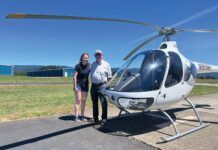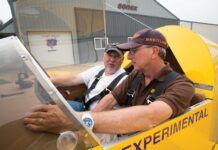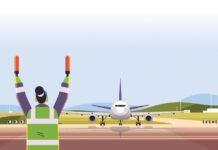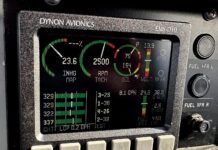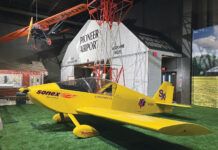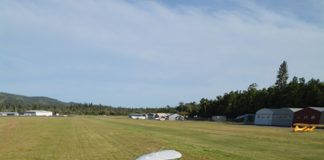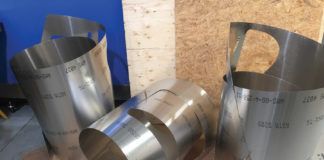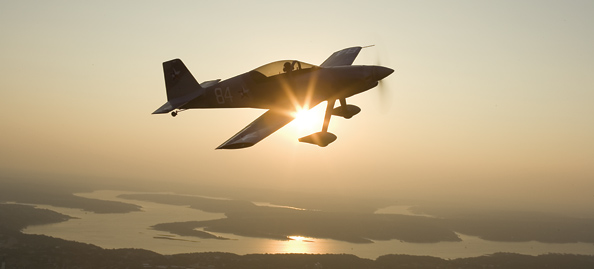
This article is the first of two that will discuss transition from building to flying. This month we explore getting ready for and completing transition training. Next month we’ll explore the more sensitive topic of the first flight. I share this, in part, as a catharsis from my experience giving transition training in my F-1 Rocket and in the P-51 Mustang.
Married people know that a short walk down the aisle changes everything and can highlight problems that couples never considered. Ministers and therapists advise that advance planning of small details like finances and time commitments will smooth the transition from boyfriend-girlfriend to husband-wife. The same is true of aircraft building. A successful transition from builder to pilot requires planning and should start long before the airplane crosses the threshold between the hangar and the runway.
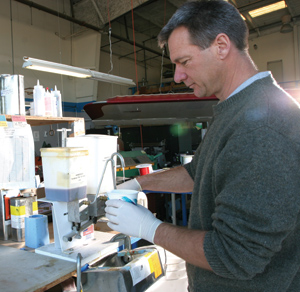
Total Immersion
Kit building is an immersive endeavor that captivates the builder in what is often a once-in-a-lifetime experience. Builders funnel every excess minute and dollar into that project in their basement, garage or hangar. Consuming these resources in the building process means that flying too often takes a second seat, and pilot skills get rusty.
Rusty skills are only half the issue because builders usually select a kit that will take them into a new realm of aviation. A low-time tricycle driver might build an RV-8 (taildragger). An airline pilot might build a Pitts. And a surplus military pilot who may never have flown a propeller-driven aircraft might choose to build a Cubby.
All of the variables preclude a simple sectional chart with a line drawn on it that leads from builder to flier. For those who have recently written the big check or are considering it, step one is to keep flying! Flying will provide inspiration to continue the building process and keep those skills sharp.
Keeping Current
Just like planning and budgeting the building process, set aside the time and funds to continue flying and developing the skill set needed to safely operate the finished airplane—even if this means taking longer to finish than desired. Staying proficient and growing the skills needed to fly a new airplane is the best approach to a smooth transition.
Unfortunately, the best way is often not how things happen. The reality is that many builders stop flying. Mike Seager has been doing transition training in the Van’s RV series full time for 19 years. “Most builders spend between three and five years finishing their airplanes,” he said. “It took five years to lose their skills, and they want to get them back in three days.”
Seager says that pilots should go to the local flight school to get checked out and get current in something. “Five hours of solo is the clincher,” he explained. “A flight instructor will sign nearly anyone off for a BFR [Biennial Flight Review], but if you are going to solo their airplanes, the standards are much higher.”
Think about that statement. What Seager is implicitly telling us is that he has seen builders who lacked the proficiency to solo a Cessna at the local flight school come for transition training. Pretty scary, especially when you consider that they want to climb into a 160-knot RV.
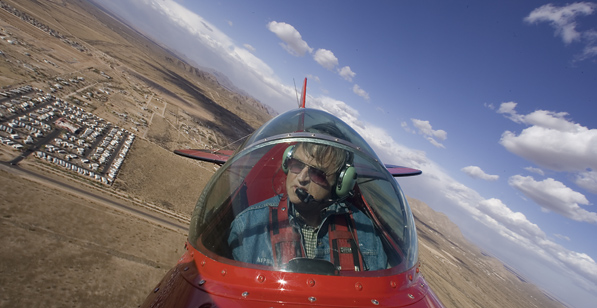
Can You Handle the Truth?
Speed is not the only issue. Many kit airplanes have stick forces that are considerably lighter than the “spam cans” found on the rental line at the local FBO. The tug on the yoke required to rotate in a Cessna 172 applied to a Cassutt Racer will bring the nose to vertical, and the aileron deflection required for a standard rate turn will result in a series of rolls.
Builders of tailwheel kits with no tailwheel endorsement or proficiency pose other challenges. Understandably, they want to do their tailwheel training in their own airplane to save money. Great idea, but it’s just not practical. Flight training is not an option in Phase I flight testing. This means finding a pilot to fly the test time off the airplane, not to mention paying the fuel bill while you watch someone else out there having a ball in your brand new homebuilt.
Some want to combine a tailwheel endorsement with their type-specific transition training. In most cases, it’s not reasonable to expect, nor cost effective, to do an initial tailwheel endorsement as part of this program. Completing the tailwheel endorsement at a flight school with a Citabria, Decathlon, Cub or Champ, and then moving to type-specific transition training should save both money and frustration. Tailwheel instruction is scarce, but with some effort and some travel, it can be found.
A good place to look for tailwheel training is at an aerobatic flight school. They often have a Decathlon available for training. Many kit aircraft have aerobatic capability, and while some pilots might say they are not interested in aerobatics, this potential opens up an exciting new realm of aviation. What can be combined is a basic aerobatic course and a tailwheel transition, which is a great way to really sharpen basic flying skills and proficiency. Indeed, no two things you can do in an airplane will sharpen pilot skills more than aerobatics and tailwheel training. Both emphasize precise control of an airplane in an unfamiliar regime—skills that will serve a pilot well when mastering a new aircraft. Whatever avenue is used to get current and proficient, it should exceed the requirements of a flight review, if that’s needed.
A flight review, current medical and any applicable endorsements such as tailwheel, complex or high performance will fulfill the requirements of the FAA. But legal doesn’t necessarily mean smart or safe. Most insurance companies will insist on some kind of type-specific transition training for pilots without previous time in type.
Transition Training
Transition training is where the rubber meets the road, and sometimes where the wheels fall off the wagon. Those building popular kits have some options. Seager and others provide transition training in the RV series aircraft, but those with less popular kits may have to be more creative.
Creative might mean using a comparable aircraft. Bearhawk builders could probably convince an insurance broker that transition training in a Super Cub would suffice. Single-seat aircraft builders have no choice but to use a comparable aircraft. Using comparable aircraft is not a new concept; the U.S. military used the famous North American AT-6/SNJ to transition pilots to nearly all of the single-seat fighters.
This practice continues today. I have successfully transitioned several pilots directly from the AT-6 to solo in the P-51 Mustang. This might sound like a big step, but if the applicant has the proper experience level and a good formal ground school, followed by a formal checkout syllabus in the airplane, it is a safe and acceptable alternative.
Even the U.S. Air Force currently has no trainer version of the A-10. A new pilot’s first flight in the airplane is a solo hop with the instructor flying beside him in another airplane instead of behind him in the back seat. The key to this kind of transition training is the same as any other transition. Proper background and thorough training will assure success.
Let’s talk about background. Builders with 200 hours total time in a Cessna 152 are not good candidates for transition to a Glasair III. Nothing in their flying career would prepare them for it. A 3- to 5-hour complex/high-performance checkout in a Bonanza is not going to make them ready to do type-specific training in a slippery 220-knot speed demon.
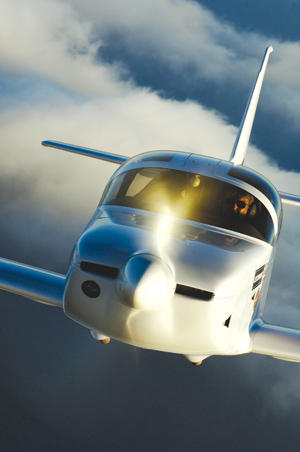
Overall Experience Does Not Equal Type-Specific Readiness
Transition to a new type can be a step up or a step back. A retiring military or airline pilot might decide to build a rag-and-tube taildragger to get back to the basics of aviation. These pilots may have little or no piston-powered airplane experience. They might be just as far behind an 80-mph taildragger as our private pilot would be in the Glasair III.
One would expect it to be easier for a multi-thousand hour ATP to slow down than it would be for the private pilot to spin up, but both face a major transition that should not be taken lightly. Start that journey soon enough that the foundation of experience and proficiency prepares you to take type specific training when your airplane is ready to fly.
Seager and others like him have aircraft that can be rented for dual instruction. The FARs and the operating limitations of an Experimental aircraft preclude rental as a legal option, so the FAA has made it possible to conduct this training under a Letter of Deviation Authority (LODA). Builders with this option have it simple. Make sure you have the proper background to fly the airplane you have built. Get current in something, and schedule training with a qualified instructor. These vendors should supply a good syllabus and an insurance policy that covers dual instruction, and they should have a reputation with insurance underwriters that will yield insurance coverage in your airplane upon completion of the training.
For kit builders who are not fortunate enough to have access to type-specific trainers, it is a much more difficult journey. The first stage is the same: Get the proper background. Then get current and obtain all of the needed endorsements in an airplane that is as similar in performance to the subject aircraft as possible. For example, if the builder’s airplane is a high-performance aerobatic monoplane, time in an Extra would be beneficial.
The final step is the type-specific transition training. There is no cookbook recipe for those forced down this road, and there are numerous pitfalls and conundrums. The insurance broker is going to want dual instruction in type, and there may not be an airplane available with a LODA that is legal to rent. There may be another builder with the same or similar type who is willing to offer a ride, but unless that owner is an instructor, that does not equal dual; if the person is an instructor, most likely his insurance does not cover dual instruction, and if you pay anything for it, one or both of you have violated the FARs.
Background Check
In these cases the initial steps of having the right background and being proficient are much more critical. The crucial question is: “How big is the step?” If the builder is a repeat offender that built a Thorpe T-18 and is moving to an RV-6, get a BFR, get current and go fly. But a Cessna driver moving to a Lancair 360 or a Glasair II T/D requires a much more deliberative process.
There is an uncomfortable aspect of this deliberative process. It has nothing, and everything, to do with flying. Many people who are willing to load their family and friends up in an airplane they built in the garage from a box full of tin or a bucket of resin are north of the norm in terms of self confidence. This is an attribute that nearly all pilots share. Pilots need to know they have the knowledge and the skills to complete the mission. Getting scared does not improve the outcome.
Self confidence is not a good thing when working out a plan to safely transition to a new airplane. An outside perspective from a qualified instructor who can assess skills, knows the airplane involved and has transition training experience is essential.
Not all pilots are overly confident. Some need encouragement, and this is when the role of the instructor is to provide positive feedback that instills the confidence needed for a successful transition. Either way, the key element is an instructor with experience, who has the integrity to say “No” or “Go” and a training plan.
For those with unique airplanes, finding an instructor can be tough. Online type club forums can be helpful. For popular types, finding an instructor is easy, but they are in demand, so scheduling them can be challenging. Either way, this costs money. But just like that other transition, the one down the aisle, if you get it right, you will have a long and happy union. If you get it wrong, it could be costly.



